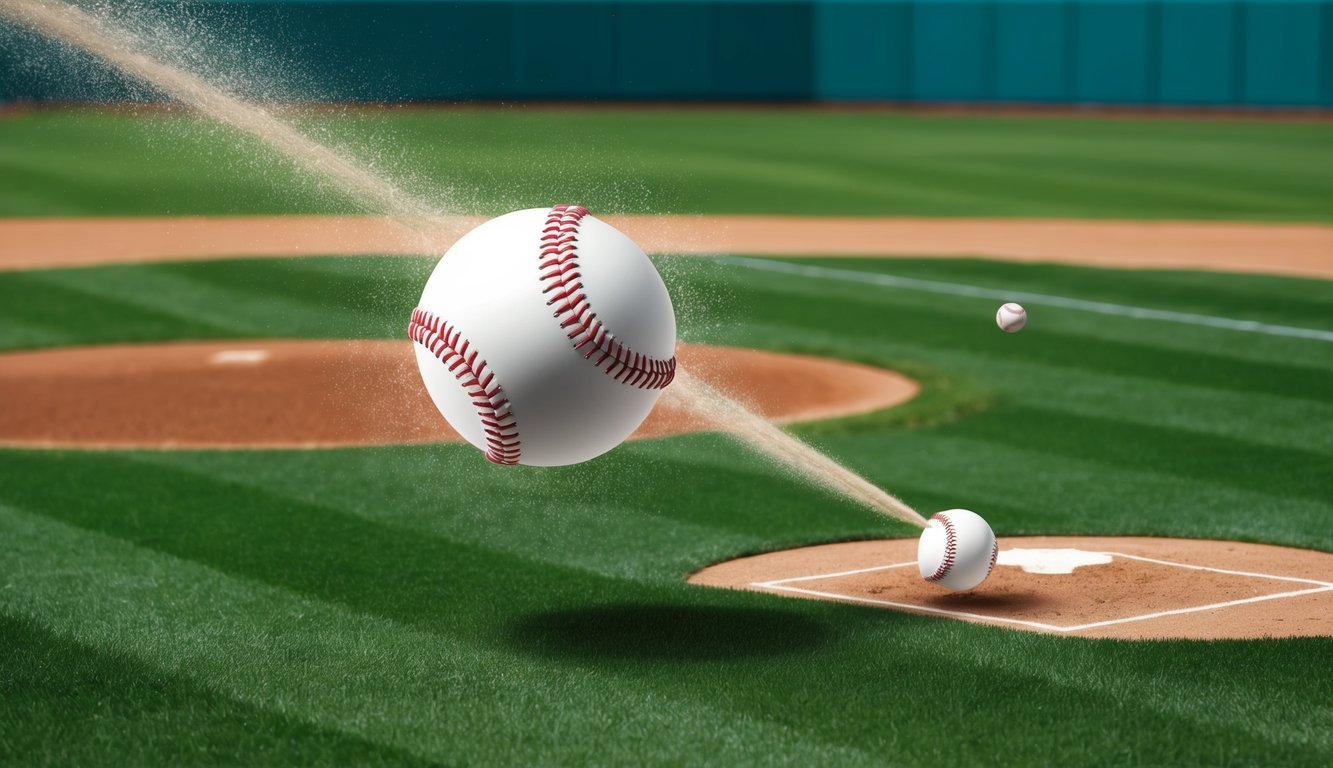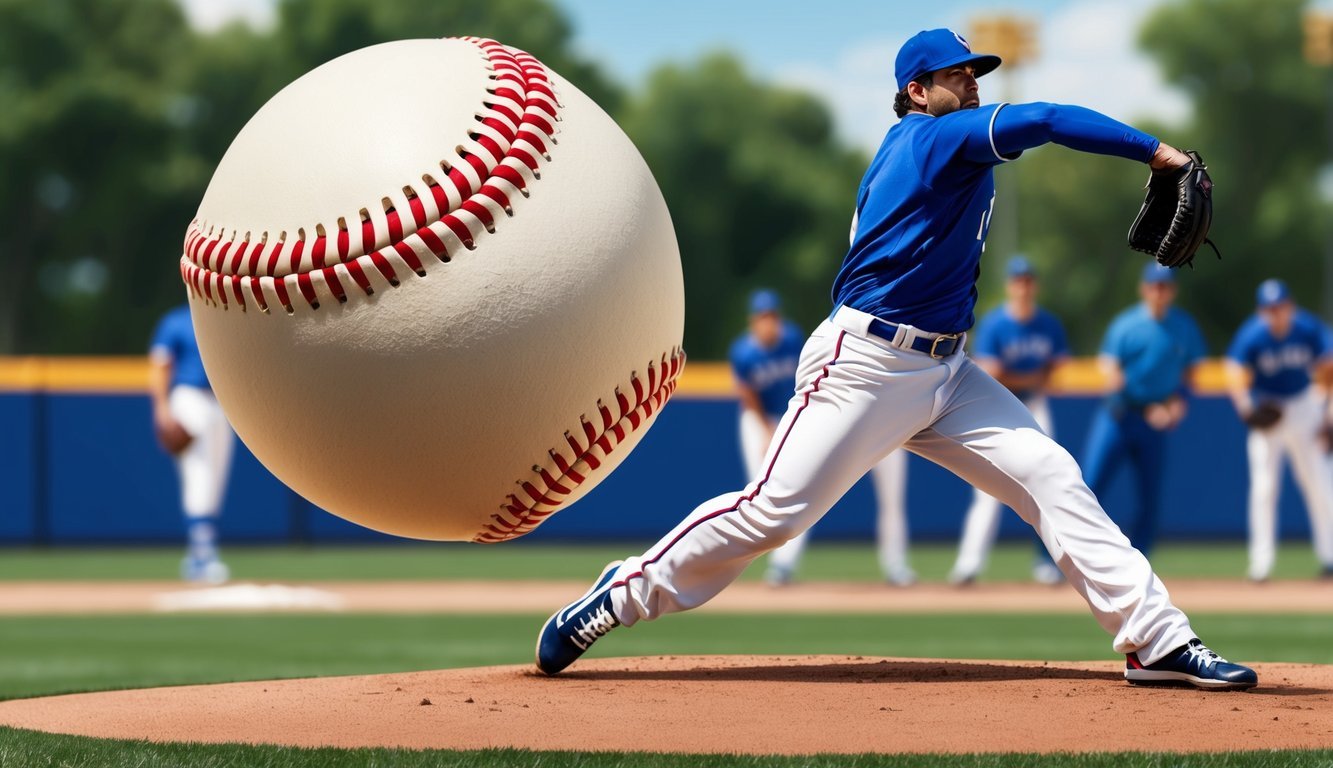In the world of baseball, pitchers are constantly seeking ways to outsmart batters and gain an edge on the mound.
One of the most intriguing and deceptive pitches in the game’s history is the screwball.
This unique pitch breaks in the opposite direction of a curveball, moving away from an opposite-handed batter and creating a challenging spin for hitters to track.
The screwball has a rich history in baseball, with legendary pitchers like Carl Hubbell and Christy Mathewson utilizing it to great effect.
Hubbell, nicknamed “The Meal Ticket,” was particularly famous for his mastery of the pitch, using it to strike out five consecutive future Hall of Famers in the 1934 All-Star Game.
Despite its effectiveness, the screwball has become increasingly rare in modern baseball due to concerns about potential arm strain.
Throwing a screwball requires a specific grip and arm motion that differs from other breaking pitches.
Pitchers must pronate their arm and snap their wrist inward at release, creating a reverse spin that causes the ball to move in an unexpected direction.
While challenging to master, the screwball can be a valuable weapon in a pitcher’s arsenal.
It keeps batters guessing and off-balance at the plate.
History and Notable Players
The screwball pitch has a rich history in baseball, evolving from its early origins to become a devastating weapon for some of the game’s greatest pitchers.
Several legendary players mastered this unique pitch, leaving an indelible mark on the sport.
Evolution of the Screwball
The screwball emerged in the early 1900s as pitchers sought new ways to deceive batters.
It gained prominence when Christy Mathewson began using a variation he called the “fadeaway” pitch.
This early version set the stage for future developments.
In the 1920s and 1930s, the screwball reached new heights.
Pitchers refined their technique, learning to impart more spin and create sharper breaks.
The pitch became known for its ability to move in the opposite direction of a curveball, baffling hitters.
As players experimented with grips and arm angles, the screwball continued to evolve.
Some pitchers added a sinking action to the pitch, making it even more effective.
This period saw the screwball become a potent weapon in many pitchers’ arsenals.
Famous Screwball Pitchers
Carl Hubbell stands out as perhaps the most renowned screwball pitcher in MLB history.
Nicknamed “The Meal Ticket,” Hubbell used his devastating screwball to dominate batters throughout the 1930s.
He famously struck out five future Hall of Famers in a row during the 1934 All-Star Game.
Other notable screwball pitchers include:
- Fernando Valenzuela: His “screwgie” helped lead the Dodgers to a World Series title in 1981.
- Mike Cuellar: A Cuban lefty who won the Cy Young Award in 1969 with his screwball.
- Tug McGraw: Known for his screwball and the phrase “Ya Gotta Believe!”
These pitchers showcased the screwball’s effectiveness at the highest level, cementing its place in baseball lore.
Their success inspired other players to add the pitch to their repertoire, ensuring its continued use in the game.
Fundamentals of the Screwball
The screwball is a unique pitch that breaks in the opposite direction of a curveball.
Mastering this deceptive pitch requires proper grip, finger placement, and throwing mechanics.
Grip and Finger Placement
To throw a screwball, start with a two-seam fastball grip.
Place your middle and index fingers along the outer seams of the baseball.
Your thumb should rest on the bottom seam, opposite your other fingers.
The key difference lies in the position of your middle finger.
Slide it slightly off-center, towards the inside of the ball.
This adjustment creates the necessary spin for the screwball’s movement.
Your index finger provides stability, while your middle finger generates the unique rotation.
Apply pressure with your middle finger as you release the ball.
Throwing Mechanics
The screwball’s effectiveness comes from its unconventional arm motion.
As you throw, pronate your forearm and wrist, turning them inward.
This action is opposite to the supination used for curveballs.
Your arm should follow through across your body, finishing on the opposite hip.
This motion creates the spin that makes the ball break away from same-handed batters.
Maintain a consistent arm speed throughout the pitch to disguise it from other offerings.
The deception comes from the unexpected movement, not a change in velocity.
Practice this motion without a ball first to build muscle memory.
Gradually incorporate the ball as you become comfortable with the mechanics.
Comparison with Other Pitches

The screwball pitch stands out from other breaking pitches due to its unique movement and deception.
It offers pitchers a distinctive weapon in their arsenal that can keep batters off-balance.
Screwball vs. Curveball
The screwball and curveball share similarities as breaking pitches, but their movement differs significantly.
A curveball breaks downward and away from a same-handed batter.
In contrast, the screwball moves in the opposite direction, breaking toward a same-handed batter.
Curveballs typically have a 12-6 or 11-5 movement on a clock face.
Screwballs display a 1-7 or 2-8 movement.
This reverse break makes the screwball particularly effective against opposite-handed hitters.
Both pitches rely on spin to create their movement.
However, pitchers generate this spin differently.
Curveballs use a downward wrist snap, while screwballs require pronation of the forearm and wrist.
Screwball vs. Slider
Sliders and screwballs both fall into the breaking pitch category, but they behave quite differently.
A slider has a tight, late break that moves down and away from a same-handed batter.
The screwball, conversely, breaks toward a same-handed batter.
Velocity is another key difference.
Sliders are generally thrown harder, often in the low to mid-80s mph range.
Screwballs tend to be slower, typically sitting in the 70s mph.
The arm action for these pitches also varies.
Sliders use a side-to-side wrist movement, while screwballs require a more unnatural pronation of the forearm.
Screwball vs. Fastball
The screwball and fastball represent opposite ends of the pitching spectrum.
Fastballs rely on velocity to overpower hitters, while screwballs use deception and movement to fool batters.
Fastballs are thrown with backspin, creating the illusion of rise.
Screwballs utilize topspin, causing the ball to drop as it approaches the plate.
This contrasting spin makes the screwball an effective change-of-pace pitch after a series of fastballs.
Speed is a major differentiator.
Fastballs are often thrown in the 90s mph, while screwballs typically max out in the low 80s mph.
This significant velocity gap can disrupt a batter’s timing when used strategically.
Pitching to Batters

The screwball pitch can be a powerful weapon against both right-handed and left-handed batters when used strategically.
Its unique movement challenges hitters and keeps them off balance at the plate.
Strategies Against Right-Handed Batters
When facing right-handed batters, pitchers can use the screwball to their advantage.
The pitch breaks away from righties, making it difficult to square up.
Start by establishing the fastball inside.
This sets up the screwball on the outer part of the plate.
The contrast in movement can fool batters expecting another inside pitch.
Mix in screwballs low and away.
This location is tough for right-handed hitters to reach.
They often chase these pitches out of the strike zone.
Use the screwball as a change-of-pace pitch.
Throw it after a sequence of fastballs to disrupt timing.
The slower speed and opposite break can lead to weak contact or swings and misses.
Strategies Against Left-Handed Batters
The screwball is particularly effective against left-handed batters due to its movement towards them.
This unusual break can be very deceptive.
Start by working the outside corner with fastballs.
Then, throw a screwball that looks like it’s heading for the same spot.
The pitch will break in on the hands, often resulting in weak pop-ups or ground balls.
Use the screwball to jam lefties inside.
The pitch’s movement makes it hard for batters to extend their arms.
This can lead to broken bats and easy outs.
Occasionally, throw a backdoor screwball.
Start it off the plate and let it break back over the corner.
This pitch can freeze batters for called strikes.
Remember to vary the count when throwing screwballs.
Don’t become predictable with its usage.
Mix it in unexpectedly to keep hitters guessing.
Practice and Mastery

Mastering the screwball pitch takes dedication and consistent practice.
Pitchers aiming to perfect this reverse curve need to focus on several key aspects of their form and mechanics.
They must maintain a consistent arm angle and wrist position to ensure the desired movement on the ball.
Additionally, mastering grip pressure and finger placement is crucial for controlling both speed and break.
Players looking to improve should study proper techniques and analyze expert advice on how to pitch a baseball effectively.
Grip is crucial for a successful screwball.
Pitchers should experiment with different finger placements to find what works best for them.
Many find success by placing their middle and index fingers along the seams of the baseball.
Wrist action plays a vital role in creating the unique spin of a screwball.
Pitchers can improve their wrist flexibility and strength by practicing with a lighter ball during training sessions.
Repetition is key to mastering the screwball’s mechanics.
Pitchers should:
- Practice the motion in slow motion
- Record their throws for analysis
- Work with a partner for instant feedback
It’s important to gradually increase throwing speed as form improves.
This helps maintain proper mechanics while building arm strength and muscle memory.
Some pitchers find it helpful to use visual cues during practice.
Placing targets or markers can aid in refining accuracy and consistency with the screwball’s movement.
Remember, patience is essential when developing this challenging pitch.
It may take weeks or even months of regular practice before a pitcher feels truly comfortable throwing an effective screwball in game situations.
